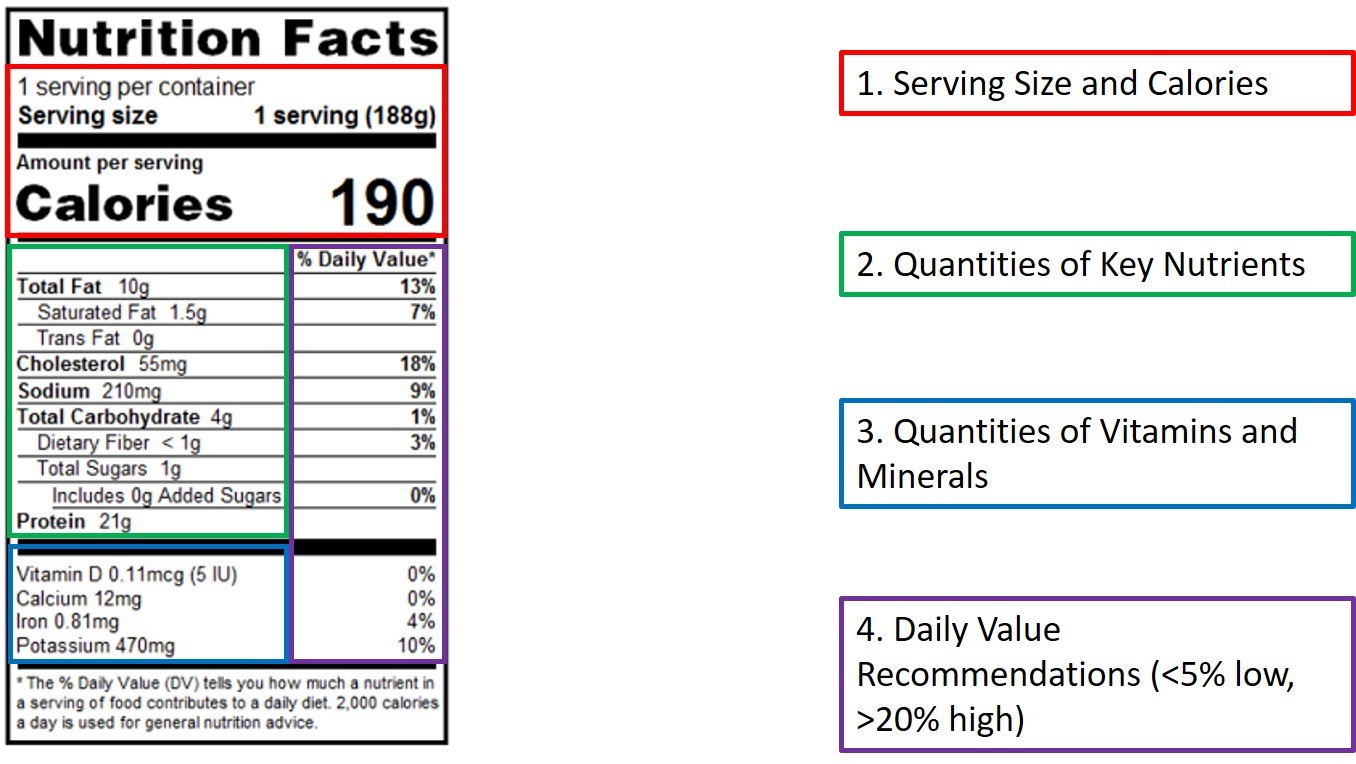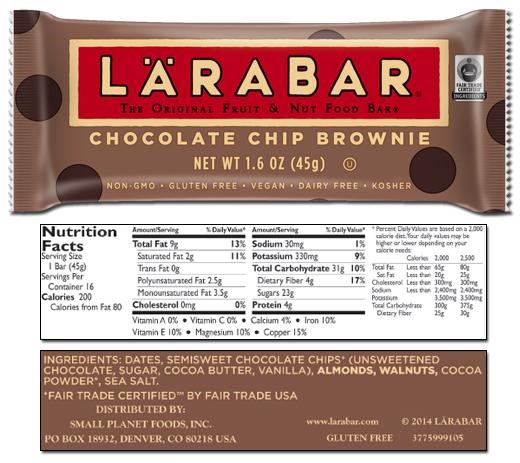Selecting the right foods is crucial for healthy eating, and knowing how to properly read a food label is essential for doing so. Below is a graphic that breaks up the four key parts of a food label followed by brief descriptions explaining how to properly interpret each section. Understanding food labels will help maximize your grocery shopping experience and the quality of your meals.

1. Serving Size and Calories
When reading nutrition labels, focus on the serving size and the number of servings in the package first. Serving sizes have standard units of measurement, such as cups, which are then broken down into grams. All nutrients shown on a food label, including calories, are calculated per serving; therefore, it’s important to look at the servings per container. For example, a bag of pretzels might show 100 calories per serving, but the entire bag might be six servings, or 600 calories.
2. Quantity of Key Nutrients
The key nutrients in all foods are fats, cholesterol, sodium, carbohydrates and protein. We need the right amount of each to maintain an optimal level of health. Here are some quick tips:
a. Limit these: saturated fat, cholesterol, sodium, trans fat and added sugars
b. Get enough of these: dietary fiber, vitamins and minerals
c. Don’t buy solely based on protein content: Food companies overhype protein, making us think we need a lot of it to be healthy; in reality, our diet only needs to consist of 20-30% of protein daily
This can be accomplished by limiting greasy processed foods and indulging in whole foods, such as fruits, vegetables, fish, nuts, avocados, whole grains, lean meats and vegetable-based oils.
3. Quantity of Vitamins and Minerals
Getting enough vitamins and minerals is essential for optimal health. We get plenty of the key vitamins and minerals (vitamins A, B, C, D, E and K as well as calcium, iron, magnesium and potassium) from a healthy diet consisting of a variety of whole foods. If this is your diet, there is no need to worry about loading up on or purchasing foods based on their vitamin and mineral content.
4. Daily Value Recommendations
Daily value recommendations are based on a 2,000- or 2,500-calorie diet. Recommendations are classified on food labels as “lower than” and “higher than.” According to the FDA, anything less than 5% is considered “lower than.” Anything that is 20% or more is considered “higher than.” Stay under 5% of the daily value for nutrients you should limit, such as saturated fats, trans fats, sodium and cholesterol. Alternatively, try to stay over 20% of the daily value for nutrients you are intended to get enough of, such as dietary fiber and essential vitamins and minerals.
Lastly, read the ingredients. It is always good to know what makes up the food you are eating. Generally, the highest quality foods contain fewer ingredients, and these ingredients are unprocessed and easy to read. Additionally, ingredients are listed in descending order by weight. For example, dates are listed first in the ingredient list below. This means dates are the main ingredient in the Chocolate Chip Brownie LARABAR.

Understanding nutrition labels is an integral part of leading an overall healthy lifestyle. Always remember to choose your foods wisely and enjoy what you eat. Bon appetite!

